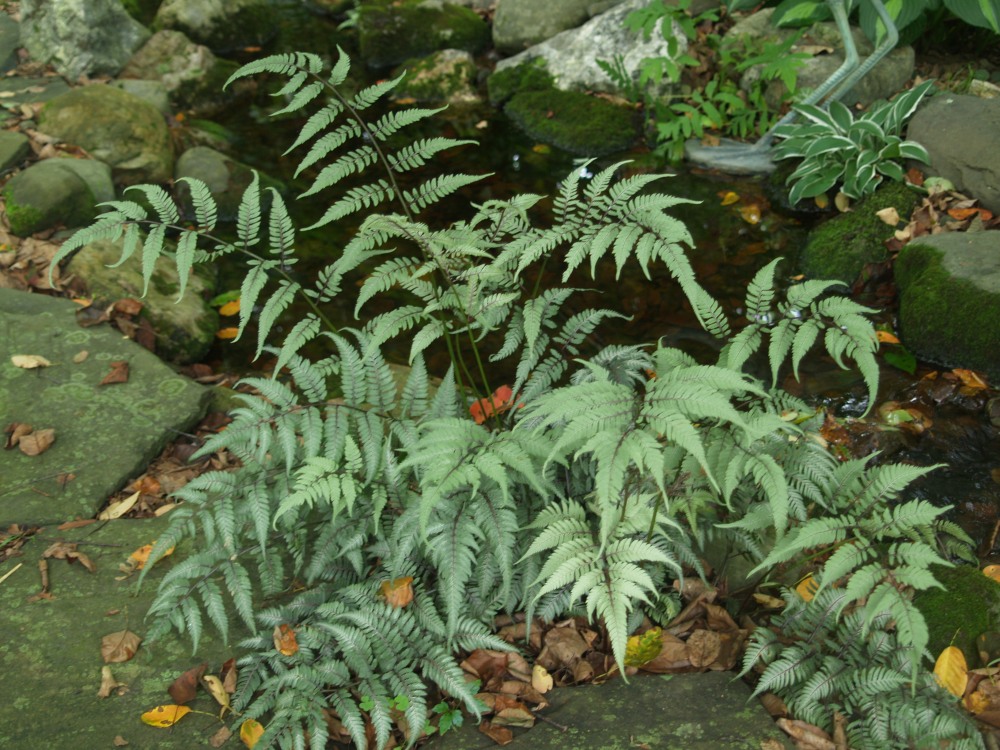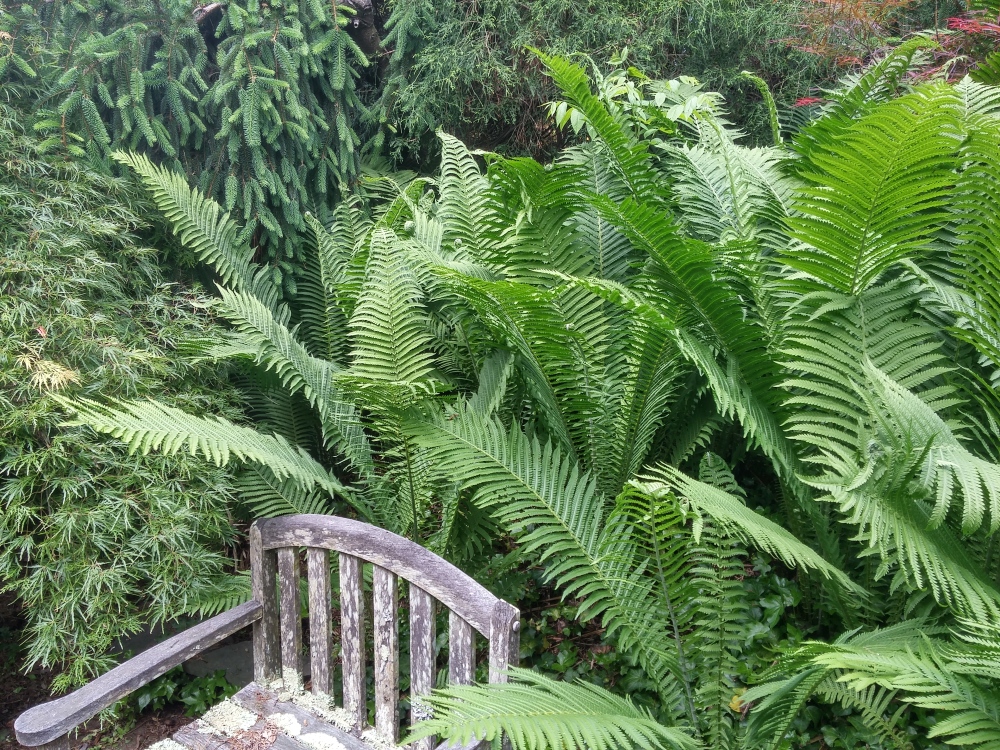For the penurious gardener, there is joy in discovering seedlings of treasured plants, and a double measure when seedlings are found in just the right spot so they can be left to grow, undisturbed. In this garden there are many dozens, possibly hundreds of hellebore seedlings. Handfuls have been transplanted around, though only so many can be kept. Few of the hundreds of Japanese maples that sprout annually are keepers, and beginning a year ago, toad lily (Tricyrtis) seedlings popped up everywhere, it seems. These appear to be all of similar foliage and form (though all are too young yet for flowers that will determine if any are keepers), and all were in spots where they must be plucked out and replanted. While not a nuisance, the thrill is somewhat diminished when there are more seedlings than you can count.

Occasionally, in damp, shaded areas I find a shallow rooted fern seedling (Sporophyte, from spores, not seed, as you probably already are aware) growing in leaf compost, most often the native Sensitive fern (Onoclea sensibilis, above), but also Japanese Painted ferns (Athyrium niponicum var. ‘Pictum’, below). These do not grow in quantity, but along a constructed steam in the garden both ferns grow on moss covered stones beneath a canopy of serviceberry (Amelanchier) and Japanese maples.

The form and coloration of the young Painted fern sporophyte (below) growing in the stream is not certain at this point, so it could possibly be offspring of the more upright growing ‘Ghost’ fern (Athyrium ‘Ghost’) instead. Whatever, I’ll be delighted, and I continually marvel when any seedling sprouts from moss or a crevice with little or no soil. I’m astonished when these survive through a winter, or for years, as they often do.

While I do not recommend digging plants from the forest, and certainly this can be illegal as well as destructive, I once transplanted several divisions from a vigorous colony of Ostrich ferns (Matteuccia struthiopteris) that is growing in spring fed, damp shade at the forest’s edge that borders the garden (property I own). These were moved to an area much drier and sunnier (below), but here they have thrived despite the lack of shade, and additional divisions from this transplanted patch have been moved to an area of relatively dry shade. While it is early to tell if these will thrive, the ferns appear content and have grown to their full height this spring.

Ostrich fern is the tallest of the ferns in the garden, and curiously, while ferns are not eaten by deer or other wildlife, ones located in the sun are feasted upon by Japanese beetles. The most prominent ferns on this sunny patio are skeletonized by mid summer, though this does no harm except to their appearance. While the various ferns require little maintenance, Ostrich ferns beside this sunny patio must be regularly pruned, and plants that pop up between stones in the patio must be yanked out. While the initial planting of Painted ferns was purchased, as were Cinnamon, Tassel (below), and East Indian ferns, ones obtained at no cost are, of course, most treasured, and a bit of maintenance is not minded. 
Hi Dave!
Always enjoyable to read your columns especially when they pertain to my home. The recent one on ferns and especially the ostrich fern intrigue me. Our vacation home nestled in West Virginia about 30 miles west of Winchester. It’s about five and a half acres largely red and white oak. Goes without saying we are almost totally shade wothing but craggy rocky soil to deal with. So far the only success I’ve had has been with hostes and they are thriving. But, I’d sure like to expand my horizons around our house with a shade plant that would ideally be perennial but more importantly simply green. What a fern be a likely candidate especially the ostrich Fern since we have the growing room? If not, what would you suggest for growing in rocky, little natural topsoil and heavily wooded?
Thanks so much once again. I definitely appreciate your column and your candid insights that have me digging through my gardening books.
Bill
Ostrich fern seems like a good fit. I would start them in a spot where they get as much light as possible. I recall that it takes a few years to get going, but then they spread quickly. I can’t imagine how you can grow hostas without deer finding them, if you don’t spray a repellent. In any case, the ferns should not be bothered by deer. The only question will be if the soil is too dry, but if you start away from tree roots where soil is deeper they’ll have a better chance to get going.
I’m excited to add sporophyte to my vocabulary today, I wonder if there’s a similar term for young sporophytes as there is for seedlings… such as a sporling
Ferns have a tough time in my mostly sunny and often droughty garden, Ostrich fern is one which can handle extremes although it will die down in August when things get too uncomfortable. Mine also came via the woods but when its roadside home was regraded and graveled I no longer felt guilty for stealing a few offsets.
Not that I have a choice, but I find that I am drawn more to the shady parts of the garden. Of course, much of the shaded areas are beneath Japanese maples, dogwoods, and redbuds that I’ve planted. In a particularly rainy May, even the dry shade at the edge of the forest looks lush.